Do your feet seem to sweat more than others? Do they regularly carry an unpleasant…
Treating heel pain and plantar fasciitis
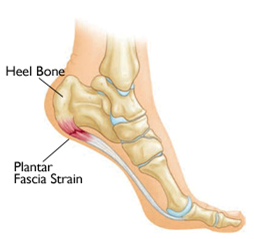
Heel pain and plantar fasciitis are among the most common conditions we treat at Masterton Foot Clinic. Often, this discomfort results from inflammation, tears, or degeneration of the plantar fascia, a strong band of connective tissue that stretches from the heel bone to the joints at the ball of the foot.
The best treatment approach greatly depends on how severe the problem is and how long you’ve experienced the symptoms. To help manage and relieve heel pain effectively, we frequently recommend these simple yet highly beneficial exercises and treatments.
Calf stretch:
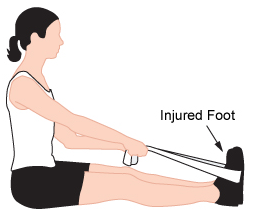
Tight calf muscles are common among people with plantar fasciitis and contribute significantly to heel pain. This tightness limits your ankle movement, causing you to lift your heel prematurely while walking, which adds strain to your plantar fascia.
To stretch your calf muscles, sit comfortably, place a towel, belt, or strap around the ball of your foot, and gently pull towards yourself until you feel a gentle stretch in your calf. Hold this position for 30 seconds and repeat several times daily.
Plantar fascia stretch:
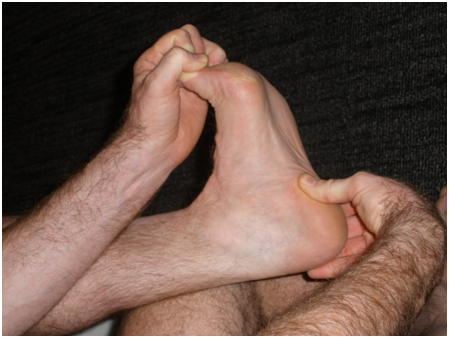
Directly stretching the plantar fascia helps ease tension and pain. Sit comfortably, cross one foot over your opposite knee, and gently pull back all your toes with your hand. You should feel a clear stretch in your arch area.
Both these stretches should be held for 30 seconds and repeated a few times a day.
Massage and ice therapy:
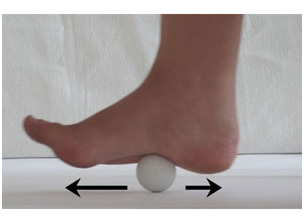
Massage is beneficial for improving blood flow and relaxing tight muscles and tissues. You can use your hands along with anti-inflammatory creams or lotions, or gently roll your foot over a golf or tennis ball.
Another effective method is to fill a 600ml Coke bottle (the hourglass shape works best) with water and freeze it. After a long day or intense activity, spend 5-10 minutes rolling the icy bottle beneath your arches and heel to relieve inflammation and discomfort.
Strapping:
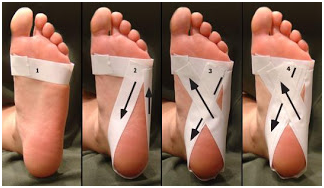
Strapping the foot provides essential support and temporary relief by offloading the plantar fascia, often offering immediate pain relief. Our podiatrists can professionally strap your foot if your plantar fascia is strained or torn.
Orthotic therapy:
Orthotic insoles with proper arch support greatly assist in managing plantar fasciitis. The primary role of the plantar fascia is to connect your heel to the ball of your foot and support your arch during movement. Orthotics reduce tension and stress on the fascia, allowing it time to heal.
At Masterton Foot Clinic, we offer customised orthotic solutions, including specific modifications such as:
- Plantar fascia groove modification: this involves creating a specially designed groove or channel within the orthotic directly beneath the plantar fascia. The groove reduces direct pressure and tension, effectively minimising irritation and promoting healing of the fascia.
- First ray cut-out: this modification involves creating a precise cut-out beneath the big toe joint, allowing the big toe joint (first ray) to move downward more naturally. By enhancing the foot’s biomechanics, this modification indirectly reduces strain on the plantar fascia.
- Heel cushion modification: we replace the area beneath your heel in the orthotic with softer foam, creating a cushioned area that greatly reduces impact and pain when standing or walking.
Additionally, if your foot is excessively pronated or flat, this can cause extra strain on the plantar fascia. Wedges placed under the inside of the heel within orthotics can correct this movement, reducing stress and helping to resolve your heel pain more effectively.
At Masterton Foot Clinic, we’re dedicated to providing tailored, effective solutions to get you back on your feet comfortably and confidently. If you’re experiencing heel pain or suspect plantar fasciitis, reach out to our team—we’re here to help!
